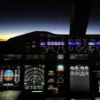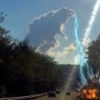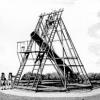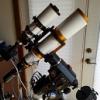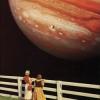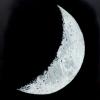I have had the great fortune to view the Southern sky through a 24 inch Obsession in the Atacama desert region of Chile and it was amazing. So I have been bitten by the aperture bug.
I know I can get too much house for my needs (did that then downsized and was able to build an observatory).
I could get too much car for my roads. Sure there are cars that go 200 mph and up, but assuming I drive legally, I'd never be able to utilize that potential. Just owning it does nothing for me
I could get a twin screw 60 ft yacht but I live on an inland lake, so there is no way I can use that to it's potential.
My question is how may one determine the practical limit for a telescope based on the current level of light pollution and the typical astronomical forecast for one's place of residence. I enjoy astronomy from my rural (green to dark green) skies in Alabama, weather permitting most weekends and occasional week nights. At the new moon, the milky way is easily visible with dark lane from treeline to treeline. The Andromeda galaxy and double cluster in Perseus are naked eye. I use a dew heater every night. Best FWHM that BYEOS shows me most nights is 2.5 to 3. I do not plan on moving to blue or black skies.
I foresee working toward retirement in the next ten years and am toying with the ideas of a "lifetime" scope or scopes which I would plan to save for and purchase while still working full time. I like most all parts of astronomy, but am most drawn to DSO's for both visual observation and currently rudimentary DSLR astrophotography. Some nights I am purely visual. Many nights I look through one scope while the second acquires images. I truly enjoy being out in the solitude of the night and am not interested in robotic imaging while I sleep. With that as background, let us for the sake of argument, suspend limits on financial resources but agree that ASSUMING there is a theoretical point at which there is no longer a perceptual difference in image quality (visual or that captured by imaging equipment) then it does not make sense to buy bigger. I also stipulate that I am not going to climb ladders in the dark, so impose a one step limit which will determine the max EP height of a reflector for a 6 ft male. I'll also stipulate that we leave EAA out of the discussion since one could always add that capability later should the mood strike, conditions deteriorate etc.
For example, I have an 8 inch mass produced dob and a C11 on a G11 Gemini 2 as my visual scopes. I would love a premium reflector like JP Astrocraft, Webster, Teeter...., possibly with Servocat, but definitely with Argo Navis type computer to help find obscure objects. Under my current skies, would an average observer with say 10-12 years of experience be able to tell the difference between a 16 inch F4-5 and a 20 inch F3 reflector? An 18 and a 20? 24? .... Moving the beast is not really an issue as I have an observatory. Where do the curves cross? I know there will always be exceptional nights of transparency and seeing, but if they are only 1 in 100, it is probably easier to travel on another astro-vacation to seek out black skies with someone else's equipment.
From an imaging standpoint, would my skies support a 17 inch iDK or is 12 or even 10 inches really a more reasonable expectation (mount would be adjusted according to needs of scope). Here you may substitute refractors for the imaging scope if you wish (I currently am learning with a SV 90T Raptor). The point is when do my conditions limit my aperture fever for imaging? I don't want to toss every third or fourth sub. I am interested in pretty pictures that I can enjoy sharing with friends and studying myself for colors and details that escape my poor human eyes.
It is my hope that there is indeed an externally imposed practical limit to my ability to see and to image that allows me to enjoy both with superb optics but also to rest easy in retirement, not worrying if another inch or two would let me see better, because at that point, I may not be able to move up. Obviously there will be some compromise in the final decision just as there always is. I am just trying to better understand the parameters in order that I have the best chance of maximizing my fun in the future. I look forward to your thoughts.
John





